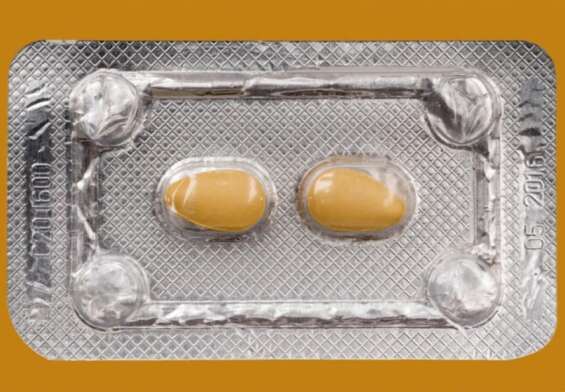
Ingrown Hairs on Your Penile Shaft: Prevention and Treatment
Hey there, FitGAG family! If you’re reading this article, chances are you’ve been dealing with the frustrating and sometimes painful issue of ingrown hairs on your penile shaft. Well, fear not my friends, because I’ve got you covered. In this article, we’re going to cover everything you need to know about ingrown hairs on your penile shaft, including the causes, symptoms, and most importantly, how to prevent and treat them. So sit back, relax, and let’s dive in!
Understanding Ingrown Hair on Penile Shaft
If you’re a man and you’ve ever experienced an ingrown hair on your penile shaft, you know just how uncomfortable and painful it can be. But what exactly is an ingrown hair, and how does it occur on the penile shaft? In this section, we’ll explore the definition of ingrown hair, how it occurs on the penile shaft, risk factors for developing ingrown hair on the penile shaft, and the symptoms that you should be aware of.
What is Ingrown Hair on Penile Shaft?
An ingrown hair occurs when a hair follicle becomes trapped beneath the surface of the skin, causing it to grow sideways or back into the skin instead of growing outward. This can lead to inflammation, redness, pain, and in some cases, infection.
How Ingrown Hair Occurs on Penile Shaft?
Ingrown hair on the penile shaft can occur as a result of shaving or waxing the pubic hair in the genital region. When hair is cut too short or removed from the root, it can grow back at an angle and become trapped beneath the skin. Additionally, tight clothing can irritate the skin and cause hair to become trapped.
Risk Factors for Ingrown Hair on Penile Shaft
There are several risk factors that can increase the likelihood of developing ingrown hair on the penile shaft. These include:
- Shaving or waxing pubic hair
- Wearing tight clothing that rubs against the skin
- Having curly or coarse pubic hair
- Having oily skin
- Having a weakened immune system
- Poor hygiene practices
Symptoms of Ingrown Hair on Penile Shaft
The symptoms of ingrown hair on the penile shaft can vary, but they often include:
- Small, red, or pink bumps on the skin
- Pain or tenderness in the affected area
- Itching or discomfort
- The appearance of pus-filled blisters
- Darkening of the skin in the affected area
In some cases, ingrown hair on the penile shaft can become infected and lead to more serious complications such as abscesses, scarring, or even sepsis if left untreated.
Now that you have a better understanding of what ingrown hair on the penile shaft is, how it occurs, the risk factors involved, and the symptoms to look out for, it’s important to take steps to prevent it from happening in the first place.
Causes of Ingrown Hair on Penile Shaft
In the previous section, we discussed the definition, occurrence, risk factors, and symptoms of ingrown hair on the penile shaft. In this section, we’ll delve into the various causes of this condition.
Shaving or Waxing Pubic Hair
One of the most common causes of ingrown hair on the penile shaft is shaving or waxing the pubic hair. When the hair is cut too short or removed from the root, it can grow back at an angle and become trapped beneath the skin. This can lead to inflammation, redness, and pain.
To avoid ingrown hair caused by shaving or waxing, it’s important to use proper techniques, such as using a sharp razor or waxing strips, and avoiding shaving against the grain. You can also consider using an electric razor or trimming the hair instead.
Tight Clothing
Wearing tight clothing that rubs against the skin can also contribute to the development of ingrown hair on the penile shaft. This is because the friction can irritate the skin and cause hair to become trapped beneath the surface.
To prevent ingrown hair caused by tight clothing, it’s important to wear loose-fitting clothing that allows the skin to breathe. Avoid tight-fitting jeans or pants that rub against the skin in the genital area.
Improper Hygiene
Improper hygiene practices can also increase the risk of developing ingrown hair on the penile shaft. This can include not washing the genital area properly or frequently enough, or using harsh soaps or cleansers that can irritate the skin.
To maintain proper hygiene and prevent ingrown hair, it’s important to wash the genital area with warm water and mild soap at least once a day. Avoid using harsh chemicals or scrubbing the skin too vigorously.
Other Potential Causes
Other potential causes of ingrown hair on the penile shaft include:
- Ingrown hair in adjacent areas, such as the pubic area or thighs, that can spread to the penile shaft
- Curly or coarse hair that is more prone to becoming trapped beneath the skin
- Skin conditions such as psoriasis or eczema that can cause inflammation and hair to become trapped
Now that you have a better understanding of the causes of ingrown hair on the penile shaft, it’s important to take steps to prevent it from happening in the first place.
Complications of Ingrown Hair on Penile Shaft
While ingrown hair on the penile shaft may seem like a minor inconvenience, it can lead to serious complications if left untreated. In this section, we’ll explore some of the potential complications of ingrown hair on the penile shaft.
Infection
One of the most common complications of ingrown hair on the penile shaft is infection. When hair becomes trapped beneath the skin, it can cause inflammation and create a warm, moist environment that is ideal for bacterial growth. This can lead to an infection in the affected area.
If you suspect that you have an infected ingrown hair on your penile shaft, you should seek medical attention immediately. Symptoms of an infected ingrown hair may include redness, swelling, pain, or discharge from the affected area.
Abscess
In some cases, an infected ingrown hair on the penile shaft can lead to the development of an abscess. An abscess is a collection of pus that forms beneath the skin, and it can be very painful.
If you have an abscess caused by an ingrown hair on your penile shaft, your doctor may need to drain it and prescribe antibiotics to help clear the infection.
Scarring
Repeated ingrown hair on the penile shaft can lead to scarring in the affected area. This can be particularly concerning if the scarring affects the appearance or function of the penis.
To avoid scarring caused by ingrown hair on the penile shaft, it’s important to seek treatment as soon as possible and to take steps to prevent it from recurring.
Other Potential Complications
While rare, there are other potential complications of ingrown hair on the penile shaft, including:
- Folliculitis decalvans, which is a rare form of folliculitis that can lead to permanent hair loss
- Pseudofolliculitis barbae, which is a condition that occurs when shaved hairs grow back into the skin and can cause scarring or keloids
- Keloids, which are raised scars that can form on the skin and may require medical treatment
It’s important to seek medical attention if you experience any complications related to ingrown hair on the penile shaft. Your doctor can provide appropriate treatment and help you prevent future occurrences.
Diagnosis of Ingrown Hair on Penile Shaft
Diagnosing ingrown hairs on the penile shaft requires a thorough physical examination and a review of the patient’s medical history. In addition, healthcare professionals may use other diagnostic tests to confirm the diagnosis and rule out any potential complications.
Physical Examination
During a physical examination, healthcare professionals will visually inspect the affected area and look for signs of inflammation, redness, and pus. They may use a magnifying glass or a dermatoscope to get a better view of the affected area. In some cases, they may also gently palpate the area to check for tenderness or swelling.
Medical History
A medical history review will help healthcare professionals to determine the potential cause of the ingrown hair. They may ask questions about the patient’s grooming habits, recent sexual activity, and use of any medications that could contribute to the development of ingrown hairs.
Other Diagnostic Tests
In some cases, healthcare professionals may recommend additional diagnostic tests to confirm the diagnosis or rule out other potential causes. These tests may include:
- Biopsy: A small sample of tissue is taken from the affected area and examined under a microscope to rule out other potential causes of the symptoms.
- Culture and sensitivity testing: A swab is taken from the affected area and sent to a laboratory to determine the presence of any bacterial or fungal infections and to identify the appropriate treatment.
- Imaging tests: In rare cases, imaging tests such as ultrasound or MRI may be used to rule out other potential complications, such as abscesses.
It’s important to note that while self-diagnosis of ingrown hairs on the penile shaft is possible, it’s always best to seek the advice of a healthcare professional for an accurate diagnosis and appropriate treatment plan.
Treatment of Ingrown Hair on Penile Shaft
Ingrown hair on the penile shaft can be a painful and uncomfortable experience, but there are treatment options available. The treatment of ingrown hair on the penile shaft usually depends on the severity of the condition, and the presence or absence of complications. Here are some common treatments for ingrown hair on the penile shaft:
Warm Compresses
Applying a warm compress to the affected area can help reduce inflammation and ease discomfort. Soak a clean cloth in warm water and apply it to the affected area for 10-15 minutes several times a day. The warmth from the compress can help to soften the hair, making it easier to remove.
Over-The-Counter Creams And Ointments
There are many over-the-counter creams and ointments available that can help to reduce inflammation and ease discomfort caused by ingrown hair on the penile shaft. These creams and ointments usually contain salicylic acid, which can help to exfoliate the skin and remove dead skin cells. Other creams and ointments contain benzoyl peroxide, which can help to kill bacteria and reduce inflammation.
Antibiotics
If the ingrown hair becomes infected, a doctor may prescribe antibiotics to help fight the infection. Antibiotics can be taken orally or applied topically to the affected area, depending on the severity of the infection.
Surgical Removal
In some cases, the ingrown hair may need to be surgically removed. This procedure is usually performed under local anesthesia, and involves making a small incision in the skin to remove the hair. Surgical removal is usually reserved for cases where the ingrown hair is causing significant discomfort or has become infected.
It is important to note that attempting to remove ingrown hairs by squeezing or picking at them can lead to further infection and scarring. If you are experiencing symptoms of ingrown hair on the penile shaft, it is important to seek medical attention to ensure proper treatment and avoid potential complications.
Prevention of Ingrown Hair on Penile Shaft
Ingrown hairs on the penile shaft can be uncomfortable and unsightly, but the good news is that there are many ways to prevent them from occurring in the first place. Here are some effective prevention strategies:
Proper Shaving Techniques:
One of the most common causes of ingrown hairs on the penile shaft is shaving or waxing. To prevent this, it’s important to use proper shaving techniques, such as using a sharp razor, shaving in the direction of hair growth, and using shaving cream or gel to reduce irritation. Alternatively, consider trimming the hair instead of shaving or waxing.
Wearing Loose Clothing:
Tight clothing can rub against the skin and cause irritation, leading to ingrown hairs. Wearing loose-fitting clothing made from breathable fabrics, such as cotton, can help prevent this.
Maintaining Proper Hygiene:
Keeping the pubic area clean and dry is essential for preventing ingrown hairs. This means showering regularly and thoroughly drying the area afterwards. Avoid using harsh soaps or scrubbing too hard, as this can irritate the skin and lead to ingrown hairs.
Other Prevention Strategies:
There are other steps you can take to prevent ingrown hairs on the penile shaft, such as:
- Using an exfoliating scrub or brush to remove dead skin cells and prevent hair from becoming trapped under the skin.
- Applying a moisturizer to the skin to keep it soft and supple, which can help prevent ingrown hairs.
- Using an electric razor instead of a traditional razor to prevent cuts and reduce the risk of ingrown hairs.
- Avoiding tight-fitting underwear or pants, which can rub against the skin and cause irritation.
By following these prevention strategies, you can reduce your risk of developing ingrown hairs on the penile shaft. However, if you do experience symptoms of an ingrown hair, it’s important to seek medical attention to prevent complications. With proper prevention and treatment, you can keep your penile shaft healthy and free of ingrown hairs.
Conclusion
Well, that’s a wrap folks! I hope you found this article helpful in your battle against ingrown hairs on your penile shaft. Remember, prevention is key, so be sure to take proper care of your skin, practice good hygiene, and avoid tight clothing and improper shaving techniques. And if you do experience symptoms of an ingrown hair, don’t be afraid to seek medical attention. Together, we can beat this pesky problem and have smooth, healthy skin down there. Thanks for reading, and keep on shining, FitGAG fam!











